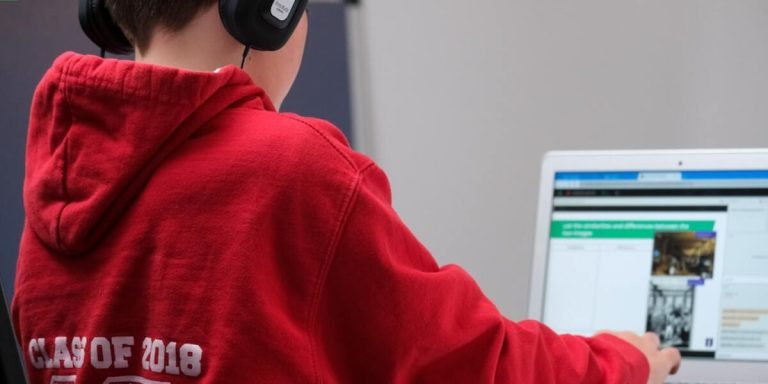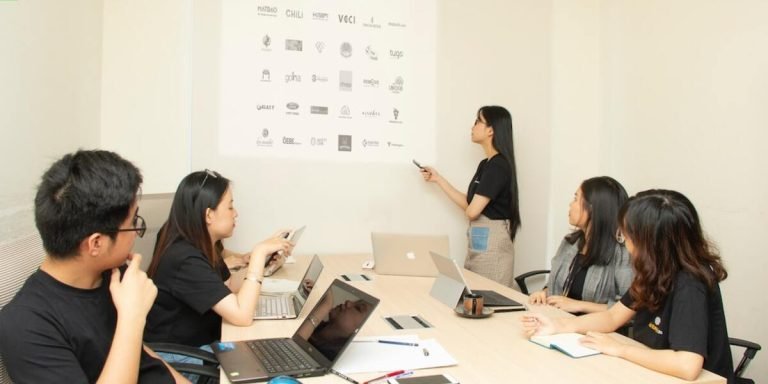Tech Integration in Early Childhood Education: A Success or Challenge?
The advent of “tech integration” in education has revolutionized the way educators impart knowledge and students learn. Especially so, at the pre-school level where children are known for developing cognitive abilities rapidly. The modern world offers more than traditional teaching methods with technology enabling innovative ways to grasp concepts faster and make learning a delight.
However, along with its advantages comes an array of challenges concerning tech integration. It’s pertinent that we familiarize ourselves not just with how it can enhance early childhood education but also understand potential pitfalls or roadblocks on this path forward. Let us explore whether integrating technology into preschool classrooms signifies success or presents unique challenges instead.
Did you know?
Contrary to popular belief, research by the National Association for the Education of Young Children (NAEYC) shows that integrating technology in early childhood education can indeed enhance development and learning when used appropriately.
The Role of Tech Integration in Enhancing Learning Outcomes
In 2023, the role of tech integration in enhancing learning outcomes cannot be underestimated. As technology continues to evolve at an unprecedented rate, it has become a vital tool for knowledge dissemination and skill acquisition in educational settings. The potential benefits that come with this incorporation are boundless both for teachers and learners.
Tech integration simplifies complex concepts into user-friendly interactive formats making learning more captivating. It’s not uncommon now to see classrooms equipped with virtual reality headsets or tablets loaded with engaging educational games catering precisely to children’s cognitive levels. These tools foster a more immersive teaching approach by integrating real-world applications which make lessons relatable thereby boosting comprehension and student engagement.
Moreover, there is also the advantage of personalized learning experiences enabled through AI-powered systems which adapt based on individual students’ pace of study eliminating largely one-size-fits-all pattern of traditional classroom instruction methods. Such bespoke education could be pivotal in bridging gaps between different types of learners ensuring no child lags behind simply because they learn differently from their peers.
So while we discern technology as primarily bolstering productivity or entertainment within society today, let’s not overlook its significant contributions towards shaping future generations via revolutionised childhood education system thanks to tech integration strategies currently being put into play worldwide.
Key Metrics for Measuring Academic Success Through Technology
Implementing technology in education is no longer a novel concept; it’s the norm. However, what truly matters now is measuring its effectiveness on academic success. Here are some crucial metrics for assessing the impact of tech integration.
First and foremost, engagement levels serve as an excellent indicator of how well technology has been integrated into teaching methods. Students’ attention spans tend to improve drastically when they find lessons stimulating and interactive – courtesy of digital tools like educational apps or virtual reality sessions.
Secondly, student feedback often unveils invaluable insights into their learning experiences post-tech integration. Surveys could be crafted to gather students’ opinion regarding these Qs: Did they feel more motivated? Was there clarity in understanding complex concepts?
Next up – performance improvement analysis over time also plays a significant role in this evaluation process.. Are the grades improving? Is submission quality better than before? These answers can help identify whether or not tech-based pedagogy serves its purpose efficiently.
Lastly, let’s not overlook teacher feedback about implementing technology into classrooms! Educators have firsthand experience dealing with both traditional and technologically-augmented ways of teaching– Their perspectives cannot be overlooked while forming any inference related to efficacy assessment.
Case Studies: Successful Implementation of EdTech Solutions
As we delve deeper into the role of tech integration in enhancing childhood learning outcomes, it is beneficial to highlight some real-world examples that perfectly illustrate how technology has revolutionized education. Undeniably, several institutions globally have successfully implemented EdTech solutions and observed magnificent improvements in their students’ academic performance.
One such example comes from Finland – renowned for its top-notch education system. A Finnish startup called Seppo developed an innovative game-based learning platform encouraging active learning through digital games. Students can create their own games using various elements like quizzes and puzzles while incorporating problem-solving skills with a fun twist.
Our next case study brings us back home to the United States where Amplify Education introduced “Amplify Reading,” a personalized reading program specifically designed for K-8 learners. By combining captivating storylines with adaptive instruction techniques tailored to each student’s unique needs, this initiative significantly improved children’s literacy rates across many states within just one year of implementation.
Meanwhile, India’s BYJU’S – The Learning App offers comprehensive lessons in math and science for grades 4-12 by employing state-of-the-art animation technologies alongside engaging video lectures delivered by experienced teachers thereby ensuring optimal comprehension and retention among students.
Strategies for Seamless Tech Integration in Classroom Environments
Strategies for seamless tech integration in classroom environments require the right mix of innovative planning and practice. As we delve into 2023, technology continues its ceaseless advancement; hence educators must adapt to effectively incorporate these tools into their teaching techniques.
Firstly, a clear vision is necessary when integrating technology in classrooms. Educators need to understand how tech can enhance students’ learning experience rather than just being an added layer or novelty. Effective strategies often involve using software that promote interaction and engagement among learners while allowing them to explore concepts independently at their own pace.
There’s no doubt about it – educational apps are more than merely entertaining distractions but potent vehicles for delivering knowledge.
Moreover, teacher training plays a crucial role as well as they’re the primary enablers of tech integration within classrooms. Providing teachers with frequent professional development opportunities enables them to stay updated on emerging technologies and methods suitable for different age groups and diverse learner capabilities.
Equally important is digital citizenship lessons aimed at making pupils responsible internet users since most technological devices will likely connect online one way or another whether inside school premises or remotely from home due to present times distanced-learning adoption caused by global health concerns.
Training Educators to Utilize Digital Tools Effectively
As modern classrooms are gradually becoming more tech-savvy, mastering digital tools has become a crucial skillset for educators. Tech integration is not just about using technology but optimizing its use to enhance teaching and learning experiences.
Ensure seamless tech integration in classroom environments by effectively training educators. Here’s why it matters and some strategies to use:
1. Enhancing Digital Literacy: In this digitally powered era where smartphones have replaced notebooks, promoting digital literacy among teachers improves their ability to keep up with technological advancements paced yearly or even quarterly at times.
2. Encouraging Active Learning: With right training on edtech tools like interactive whiteboards or educational apps, educators can transform conventional passive lectures into highly engaging ones encouraging active participation from students as well.
3. Facilitating Personalized Education Plans: Training allows instructors to harness artificial intelligence-powered applications which can help design personalized education plans suiting unique needs of every child furthering inclusive education goals in 2023+ years.
- Provide continuous professional development opportunities that focus on integrating technology into the classroom effectively.
- Offer hands-on workshops where teachers can learn about and experiment with new tech tools.
- Create a mentorship program that pairs tech-savvy teachers with those less comfortable using technology.
- Allocate funds to update or purchase new technology and software for classrooms regularly.
- Encourage collaboration among teachers to share best practices and successful integration strategies.
- Ensure technical support staff are available to assist teachers with any issues that arise when using technology in their lessons.
- Collect feedback from teachers on the effectiveness of the technologies used, promoting a culture of continuous improvement.
a) Regular Workshops & Webinars – Planning regular workshops/webinars focused around latest instructional technologies will widen horizons enabling them adapt faster.
b) Peer Collaboration – Foster an environment where teachers share success stories/failures related towards incorporating app-based lessons triggering newer ideas fueling collective growth.
Designing Curriculum That Incorporates Interactive Tech Elements
Designing curriculum that consistently and effectively incorporates interactive tech elements has become increasingly vital in today’s 2023 educational setting. This task, however, can seem overwhelming for educators trying to strike the right balance amidst a rapidly evolving digital landscape.
The initial step towards successful tech integration is understanding your students’ technical abilities and needs. Educators should consider their student demographics; what type of technology do they use daily? Which applications are they most comfortable with?
Understanding this provides invaluable insight into how you could develop relevant and engaging content using familiar technologies.
Next, think about the tools at your disposal. Are there smart devices available for classroom activities or does each child need to bring their own device (BYOD)? Can QR codes be utilized to create immersive learning experiences?
Figuring out which technological assets are accessible will guide effective strategizing on incorporating them into curricula seamlessly.
Creating objective-aligned lessons with technology becomes easier when we begin viewing these resources not as add-ons but essential components of our teaching strategy. Therefore, lesson objectives should direct how technology gets implemented rather than letting the choice of gadget dictate Lesson planning.
For instance, if an educator aims to teach coding basics in maths classes for elementary students – games such as Kodable or Scratch Jr may serve both purposes efficiently by integrating play-based learning along with developing computational skills through visual programming language designed specifically according to children’s cognitive abilities..
Overcoming Challenges Associated with Implementing Educational Technology
When it comes to the integration of technology in education, several challenges may arise. The most prominent among these includes resistance from educators, limited resources, and a lack of technical expertise. However, throughout 2023 we’ve seen that overcoming such barriers is achievable with strategic planning.
Resistance from teachers can often stem from fear or discomfort with new technologies. To overcome this barrier, schools are beginning to invest significantly in professional development programs aimed at adequately training educators on how best to incorporate tech into their classrooms effectively and safely for maximum student engagement and learning outcomes.
Identifying and Addressing Common Barriers to Tech Adoption
Technology is undeniably a significant force in today’s education landscape. However, integrating such tech into existing curriculum and classrooms can pose several challenges. While these hurdles might seem daunting at first glance, with careful planning and strategic action, they can be successfully addressed.
One of the most common barriers educators face when it comes to tech integration is resistance from teaching staff. Some teachers may feel overwhelmed by new technology or remain skeptical about its benefits for students’ learning experiences. It’s essential that administrators address this issue directly by providing comprehensive training sessions on how to use new tools effectively in their lessons.
Furthermore, proper infrastructure plays a vital role too while considering successful tech adoption—most notably reliable internet access and compatible devices are necessary components to leverage digital resources fully without interruption.
Another barrier often encountered during the process of implementing educational technology relates to budget constraints. Many schools have limited funds allocated for technological advancement which makes mass procurement difficult if not impossible sometimes! Strategies like donor sourcing or leasing instead of purchasing equipment outright would need consideration here as options worth exploring!
The student-parent perspective also needs attention—an important element altogether often overlooked in favoring professional viewpoints! Parents could harbor apprehension regarding screen time exposure limits; therefore assuring them through transparency about protective measures & controls incorporated within software systems will help mitigate any undue concern surrounding children’s online safety throughout school hours spendings due credit wise indeed warrants much needed notice!
Support Systems and Resources for Continuous Technological Advancement
The evolution of the digital world has made technology an integral part of our lives. Integrating it into education, however, presents its share of challenges – a hurdle that is worth overcoming for the benefits it brings. The keyword here is ‘tech integration’.
But how do we facilitate continuous tech integration in educational environments? Support systems and resources become indispensable.
A top-tier support system assists during roadblocks encountered in implementing new technologies. Teachers are central to such programs and need consistent training initiatives from competent authorities or experts on effective application methods related to this domain.
Tech-savvy teachers can help their peers by demonstrating practical applications through workshops or informal sessions – creating an environment conducive for sharing knowledge about utilitarian aspects of tech incorporation within classrooms.
Mentorship programs also play a significant role as they offer individualized professional learning experiences where educators receive guidance from mentors who have successfully incorporated technology into their teaching models without disrupting existing routines too much.
In addition to human resources, online platforms make available numerous tutorials and webinars directed towards materializing smooth technological transitions at schools. Websites like edWeb.net provide free online communities where teachers can connect virtually with education professionals worldwide; discussing strategies concerning successful execution processes around integrating novel software/hardware tools at hand.
Governmental bodies should be invested in regularly updating curricula reflecting current tech trends – encouraging students to familiarize themselves with skills echoing future requirements while simultaneously instilling traditional values highlighting well-rounded development goals.
Conclusion
In the ceaseless ebb and flow of childhood education, tech integration has proven itself to be not merely a fleeting trend but an essential component in nurturing well-rounded learners. While challenges persist, as they do in any novel endeavor, it also presents unparalleled prospects that can revolutionize how our children acquire knowledge.
So whether you are a parent deciphering the enigma of your child’s digital homework or an educator striving for graspable ways to incorporate technology into classroom learning – remember you’re not alone. Explore more enlightening articles on early childhood education here on our website. Become part of this ever-expanding discourse about innovative teaching methods and thoughtful parenting strategies designed with your young learner’s success at heart!







